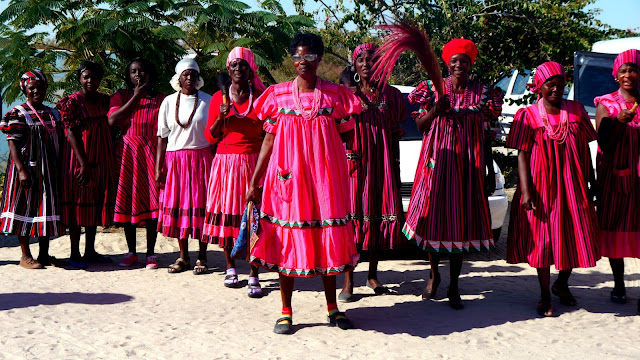The people referred to as the Owambo people today live in the central Northern area of Namibia and they are also present in Angola. There are several other tribes that makes up the Owambo, there are precisely eight of these tribes. The language that unites the tribe is bantu in nature, while the language differs slightly from tribe to tribe, the languages are closely related. The area inhabited by the Owambo people have since being explored by the Christian missionaries since 1870.
The Owambo people usually boasts of a hierarchical system of governance with one king and one headsman per village, the headsmen report to the king and the king has the final say. Today, only three of those tribes still have kings and the chief in council system. The cultural life of the Owambo people have evolved over the years, there are still several culture that the Owambo people holds dear and that is worthy of mention.
Today, in Owambo land, there are a few traditional villages where the houses are hidden behind wooden fence. The villages also show a maintenance of the social order that have kept the Owambo people together for so long. At the fence of such villages, visitors are welcomed before they are allowed to come in. The fence is also used to keep the cattle being reared at bay since the village is surrounded by farm lands where villagers grow beans and pearl millet.

The Owambo people are artistically inclined. This is evident In the crafts and art on display at any Owambo settlement. The women usually champion quilting and pot making. There is also the Onyoka, the traditional necklaces made from mussel shell beads. The necklaces are not just meant for the adults, every new child in the Owambo tribe is usually welcome with a string of Onyoka. The women also wear Onyoka whenever they intend to attend events.
The women in early times also wear ornamental buttons called Ekipas, the buttons are made from ivory or bones. The buttons are usually worn at the back on two leather straps hanging down from the waist. The number of Ekipas worn by a woman shows her status and the wealth of her husband, the more the Ekipas, the more upwardly mobile the woman is.
The Owambo women are fairly vain and this explains the length they go to in a bid to look good. One of such instances have gone on to provide foreign exchange for Namibia. For generations, Owamba women have harvested the fruit of the marula tree. Aside from using the oil extracted from the fruit as a taste enhancer for their chicken and mahangu dishes, they also use the oil as a moisturizer for their skin. Today, Namibia exports marula oil to Europe.
The best time to visit the Owambo regions is after the rains, at such a period the heat would have subsided. Come on our safari and explore the intricate world of the Owambo.